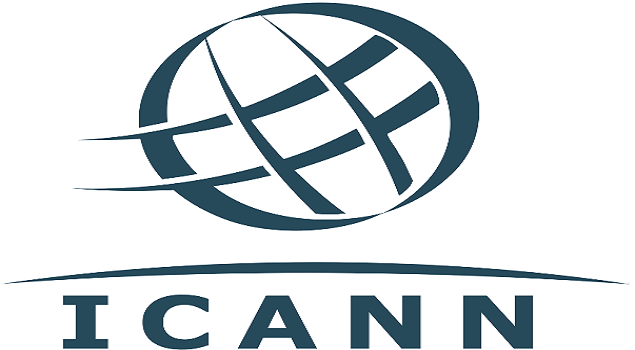E-Business
Accenture Study Unveils Characteristics of High Performance CIO
A global management consulting firm, Accenture, assets that CIOs considered high performer demonstrate excellence in three key traits – innovation, agility and execution. This was a statement from a presentation titled “Positioning IT as a Strategic Asset” that was based on insights from an Accenture third global IT performance research program. The programme is a global effort to measure how IT organizations perform.
According to Mr. Dandy Ogiugo, the Accenture Executive who delivered the presentation, the goals of the CIOs are to drive enterprise value from IT and to manage the IT function as a business.
He pointed out that the consumer landscape is changing globally – through Information Technology, people are a lot more knowledgeable, more demanding and more empowered to expect higher quality for goods and services they consume. As a consequence of this changing landscape, CIOs are being forced to become innovative in how they manage scare resources and to recalibrate their efforts to drive more enterprise value through IT while trying striving to meet C-suite expectations. Specifically, CIOs need to maximize value from discretionary spend, remove complexity from their IT portfolio and use IT investments to produce greater business value for the business.
Given this context, Mr. Ogiugo stressed that CIOs that want to become high performer must excel in three key fundamentals namely IT Execution, IT Innovation and IT Agility. Leaders in IT Execution have active governance programs and involve the business as partners in IT strategy; they use metrics to ensure effective cost/benefit management of IT investments and manage IT as a business. Leaders in IT Innovation consider IT a strategic asset for competitive advantage by applying a continuous innovation and collaboration mindset to the deployment of new technology. Finally, leaders in IT Agility are effective at aligning IT resources to business requirements and priorities. They integrate their optimized application portfolio internally and externally, and they seek technologies that provide dynamic access to Infrastructure.
The Accenture IT research further highlighted that CIOs that excel in the three fundamentals have web-enabled 42% more of their customer interactions; are twice as likely to view workforce performance as a priority; are eight times more likely to consistently measure the benefits realize from strategic IT initiative; and spend 25% more annually on developing and implementing new applications rather than on maintaining existing ones.
The IT research also noted that these CIOs are taking a structured approach towards building core capabilities in nine (9) areas namely Strategic IT Alignment, IT Governance, IT Architecture, Information Technology, Workforce & Resource Management, Information & Technology Security, Solution Delivery, Service Management & Operations, and Outsourcing.
In conclusion, the presentation urged CIO to take a stand to improve the agility, innovation and execution of their IT organisation by molding IT to the needs of the business, and defining a plan to bridge the gap between their desired end-state and current state.
E-Business
Survey Reveals Marketing Leaders See Strong Potential in gTLDS Despite Knowledge Gap

A new global survey from the Internet Corporation for Assigned Names and Numbers (ICANN) reveals that 52% of marketing leaders believe generic top-level domains (gTLDs – the three characters or more that come after the dot in a URL) have strong potential for enhancing brand presence online; however, a knowledge gap is preventing many brands from taking advantage of the opportunities that a gTLD can bring.

The research surveyed over 2,000 marketing leaders across eight countries (Brazil, China, India, Mexico, Nigeria, South Africa, U.K., and U.S.) with the purpose of creating a picture of the evolving digital marketing landscape and understanding the levels of awareness around gTLDs.
It comes as ICANN prepares to open the next application window for new gTLDs in April 2026 the New gTLD Program: Next Round – the first opportunity in more than a decade for organizations to apply to operate their own gTLD.
Top-level domains are the letters found at the end of an Internet address (with gTLDs including .charity, .menu, .paris and .ceo). Brands can apply to run their own gTLD as a way to indicate the purpose of their organization or to clearly mark a website as being related to their brand.
The research shows that increasing brand awareness and visibility is the top priority for marketing leaders (54%) and that over half believe that gTLDs have strong potential for enhancing brand presence online.
However, the research also shows that almost a third (32%) of marketing leaders surveyed are unfamiliar with gTLDs, which suggests that operating a new gTLD may be a strategic opportunity that many organizations are currently overlooking.
Key findings from the research include:
- After defining a gTLD, 92% of marketing leaders responded that they could see the potential benefits to gTLDs, with enhanced brand differentiation (46%), improved customer trust (45%), better control over online presence (44%), and improved SEO (44%) topping the list.
- 19% of marketing leaders work for organizations that have previously applied for a gTLD.
- Cost concerns (31%), knowledge gaps (27%), and insufficient resources (24%) were identified as the main barriers to application.
- The research revealed notable regional variations, with Nigerian (74%) and Indian (61%) marketing leaders showing the strongest belief in gTLDs’ potential for branding and online presence. In contrast, marketers in China expressed more mixed views, with 50% seeing strong potential but 49% considering gTLDs an unnecessary investment with unclear Return On Investment.
The findings come at a time when marketing leaders are facing significant challenges in standing out from competitors (53%), attracting and engaging the right audience (52%), and keeping pace with digital trends (47%).
A new gTLD can be an innovative tool for commerce and communication. They allow businesses in specific countries, sectors, or niche markets to create an exclusive, descriptive, and memorable label on the Internet.
An entity operating a gTLD can provide its users and customers with an extra measure of confidence in its security and legitimacy online. This can be valuable in today’s environment, where users often don’t know whether they can trust the source on the Internet.
Theresa Swinehart, SVP, Global Domains & Strategy said: “The New gTLD Program: Next Round presents an opportunity for businesses, communities, governments, and others to apply to operate their own secure space online, tailored to fit their organization, community, culture, language, and customer interests.
Now is also the moment for brands to consider applying for a gTLD, and this research tells us there is still a lack of awareness. ICANN can help provide information and raise awareness of the Next Round and the opportunity it presents for global communities, organizations, and businesses, including brands.”
To help address the knowledge gap, ICANN is developing resources to help organizations understand the application process and potential opportunities for gTLDs ahead of the 2026 application window. ICANN also offers the Applicant Support Program (ASP), which provides financial and non-financial assistance to eligible applicants.
E-Business
Firm Reports a 48% Increase in Malicious Packages Threatening Software Supply Chains

Kaspersky’s Global Research and Analysis Team (GReAT) experts at the 10th annual Cyber Security Weekend – META 2025 held recently, talked about supply chain attacks and reported that by the end of 2024 a total of 14,000 malicious packages were found in open-source projects, a 48% increase compared to the end of 2023. 42 million versions of open-source packages have been examined by Kaspersky throughout 2024 in search for vulnerabilities.

Open-source is software with source code that anyone can inspect, modify, and enhance. Popular open-source packages include GoMod, Maven, NuGet, npm, PyPI, and others.
These are tools that power countless applications and help developers easily find, install, and manage pre-built code libraries, making it simpler to build software by reusing code others have written. Attackers take advantage of the popularity of these and other packages.
In March 2025, the Lazarus Group was reported to have deployed several malicious npm packages, which were downloaded multiple times before removal. These packages contained malware to steal credentials, cryptocurrency wallet data, and deploy backdoors, targeting developers’ systems across Windows, macOS, and Linux.
The attack leveraged GitHub repositories for added legitimacy, highlighting the group’s sophisticated supply chain tactics. Kaspersky’s GReAT also found other npm packages related to this attack. Malicious npm packages could have been integrated into web development, cryptocurrency platforms, and enterprise software, risking widespread data theft and financial losses.
In 2024, a sophisticated backdoor was discovered in XZ Utils versions 5.6.0 and 5.6.1, a widely used compression library in Linux distributions. Inserted by a trusted contributor, the malicious code targeted SSH servers, enabling remote command execution and threatening countless systems globally.
Detected before widespread exploitation due to performance anomalies, the incident highlighted the dangers of supply chain attacks. XZ Utils is integral to operating systems, cloud servers, and IoT devices, making its compromise a threat to critical infrastructure and enterprise networks.
In 2024, Kaspersky’s GReAT discovered that attackers uploaded malicious Python packages like chatgpt-python and chatgpt-wrapper to PyPI, mimicking legitimate tools for interacting with ChatGPT APIs.
These packages, designed to steal credentials and deploy backdoors, capitalised on the popularity of AI development to trick developers into downloading them. These packages could have been used in AI development, chatbot integrations, and data analytics platforms, endangering sensitive AI workflows and user data.
“Open-source software is the backbone of many modern solutions, but its openness is being weaponised. The 50% rise in malicious packages by the end of 2024 shows attackers are actively embedding sophisticated backdoors and data stealers in popular packages, which millions rely on.
“Without rigorous vetting and real-time monitoring, a single compromised package can trigger a global breach. Organisations need to secure the supply chain before the next XZ Utils-level attack succeeds,” comments Dmitry Galov, Head of Research Center for Russia and CIS at Kaspersky’s Global Research and Analysis Team.
E-Business
NDPC Probes Suspected Data Breach in Examination Centres

Nigeria Data Protection Commission (NDPC) has launched an investigation into allegations that the confidentiality and integrity of candidates’ personal data may have been compromised by hackers.

The Commission initiated the inquiry following concerns over possible data breaches during examinations.
Preliminary findings indicate that several examination centres may not have implemented adequate technical and organizational measures to safeguard candidates’ personal information, as required under data protection regulations.
Although the incident reportedly affected 379, 997 candidates, the NDPC’s investigation is poised to cover a systemic audit of data processing and third parties.
It will be recalled that JAMB recently admitted that a technical error on its platform affected a total of 379,997 candidates in 157 examination centres across Lagos and the South-East.
Further investigation led to the arrest of at least 20 suspects who are currently in the custody of the Department of State Services and the Nigerian Police Force.

 Telecom3 days ago
Telecom3 days agoMTN Nigeria Invests ₦900Bn in 2025 to Boost Network Quality in Lagos & Abuja

 E-Business3 days ago
E-Business3 days agoFirm Reports a 48% Increase in Malicious Packages Threatening Software Supply Chains

 News3 days ago
News3 days agoEFCC Witness Admits Writing Off Arik Air’s $2.3M Debt Amid N76Bn Fraud Trial

 Telecom3 days ago
Telecom3 days agoMTN Nigeria Wins Award for Best Use of Data @MarkHack 4.0 Awards Night

 News3 days ago
News3 days agoSERAP Urges National Assembly to Reject Tinubu’s $24Bn Loan Request Over Debt Concerns

 E-Financial3 days ago
E-Financial3 days agoSenate Passes Harmonised Report on Tax Reform Bills

 Broadcasting3 days ago
Broadcasting3 days agoThe Rave Revolution: How Gen Z and EDM Are Rewriting Nigeria’s Nightlife

 Telecom2 days ago
Telecom2 days agoGlo, Huawei, Communications Ministry Bring Digital Services to Abuja Village




























